
Shipbuilding projects will always be subject to the realities and complexity inherent to production at such large scales. With the release of SSI 2019 R2.1, we’ve worked hard to help you tackle those realities and make it easier for you to focus on accomplishing more.
With this release, you’re now able to insert lifting components and vectors, save time when managing welds, and manage and correct clashes globally. Plus, if you have access to the Subscription Advantage Pack, you can now reduce rework even further when working with multiple hulls.
Model Lifting Components and Vectors in Assembly Drawings
Assemblies don’t exist in a vacuum. Not only do they need to be moved and manipulated within a shipyard, but it is crucial to accurately understand the impacts that lifting and turning will have on the assembly, as well as the lifting equipment itself. Now, lifting components and vectors can be added directly to model drawings to provide a platform for those critical calculations.
This information can then be exported using EnterprisePlatform PublisherLT Operations to quickly produce .STEP, .IGES and .XML files, which allow for Finite Element Analysis (FEA) calculations to be made by external software programs.
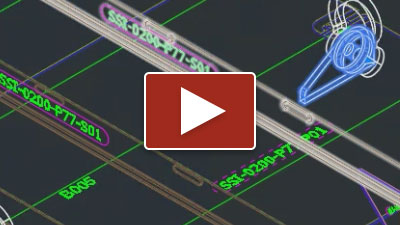
Support Use of Secondary Product Hierarchy with WeldManagement
Shipbuilding projects take place on a massive scale, and that reality trickles down to every assembly. To be successful, it’s crucial that you have as much visibility and control over each part of the process as possible. Ensuring you have that control over your welds is key.
ShipConstructor 2019 R2.1 now supports weld management within Product Hierarchies, and with the new WeldManagement Product Hierarchy Palette, your ability to control, view and manage welds across your project has been greatly expanded. Improved integration of WeldManagement within the Product Hierarchy allows you the ability to control when and where welds occur, even across multiple units and across the entire project.
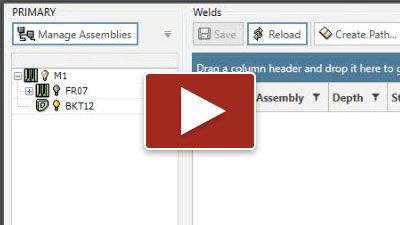
Improved Scaling and Detailing of Profile Plots
Ensuring all relevant information is available to the production floor is crucial for reducing production errors and minimizing rework. Having Profile Plots that make It easy to see details clearly are a big part of accomplishing that.
Before ShipConstructor 2019 R2.1, when inserting Profile Plots, often the scale that is used by default would make it difficult to see end views and critical details. It’s no surprise then that one of our most requested Nexus Wishlist features ever has been the improved scaling and detailing of profile plots.
You asked, we delivered. Web, Flange, and Profile views can now be scaled separately from end views, and enhanced annotation for green means more information can be conveyed in less space. Overall, you’re now able to make better use of the drawing space with improved Profile Plot scaling and detailing, while reducing human error and saving huge amounts of time through automation.
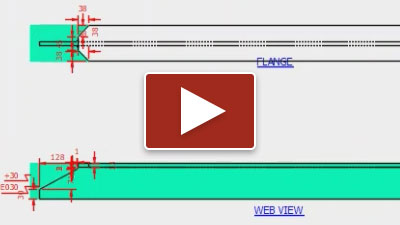
Clash Manager
Fixing interference issues that occur on the production floor is extremely costly and can force your project over budget and past deadlines. Understanding clashes throughout your project , and ensuring you’re effectively detecting and managing clashes as early as possible is crucial to establishing a productive project workflow.
Previously, it was only possibly to see clashes for the drawing being worked on in the Clash Palette. Now, with the Clash Manager, there is a central location where you can locate, view, manage, and correct clashes across the entire project.
Global Clash Detection runs in the background while you work, minimizing the risk of something going undetected. Then, when you’re ready to identify and correct clashes, the Clash Manager gives you the flexibility to use part type attributes, status, and User Defined Attributes to view clashes in your project and drawings.
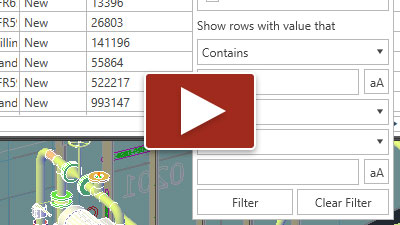
Multi Hull Solution for Transfer of Production Drawings
Managing sister ships effectively is one of the hardest problems currently facing shipbuilders. In some cases, we can see as much as a 40% difference between the first and last ship built. Because of the extreme scale at which shipbuilding operates, any opportunity to reduce rework can result in immense time and cost savings.
The importance of solving this challenge for shipbuilders has pushed us to remain at the cutting edge and continuously develop our Multi Hull Solution across releases. With ShipConstructor 2019 R2.1, you can now transfer and update production drawings across hulls. Spool, Assembly, Arrangement, Product Hierarchy, and Support Construction drawing types can now be used across multiple projects, eliminating the need to recreate drawings.
To get access to our Multi Hull Solution and become an early adopter of the other innovative features within the Subscription Advantage Pack, all you need is an up-to-date subscription. Contact Client Success to get set up.
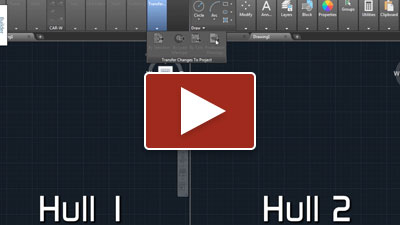
Find More Information
To get more details on this release and see a breakdown of the specific features we’ve added, or to download the update, visit our Release Information page.
